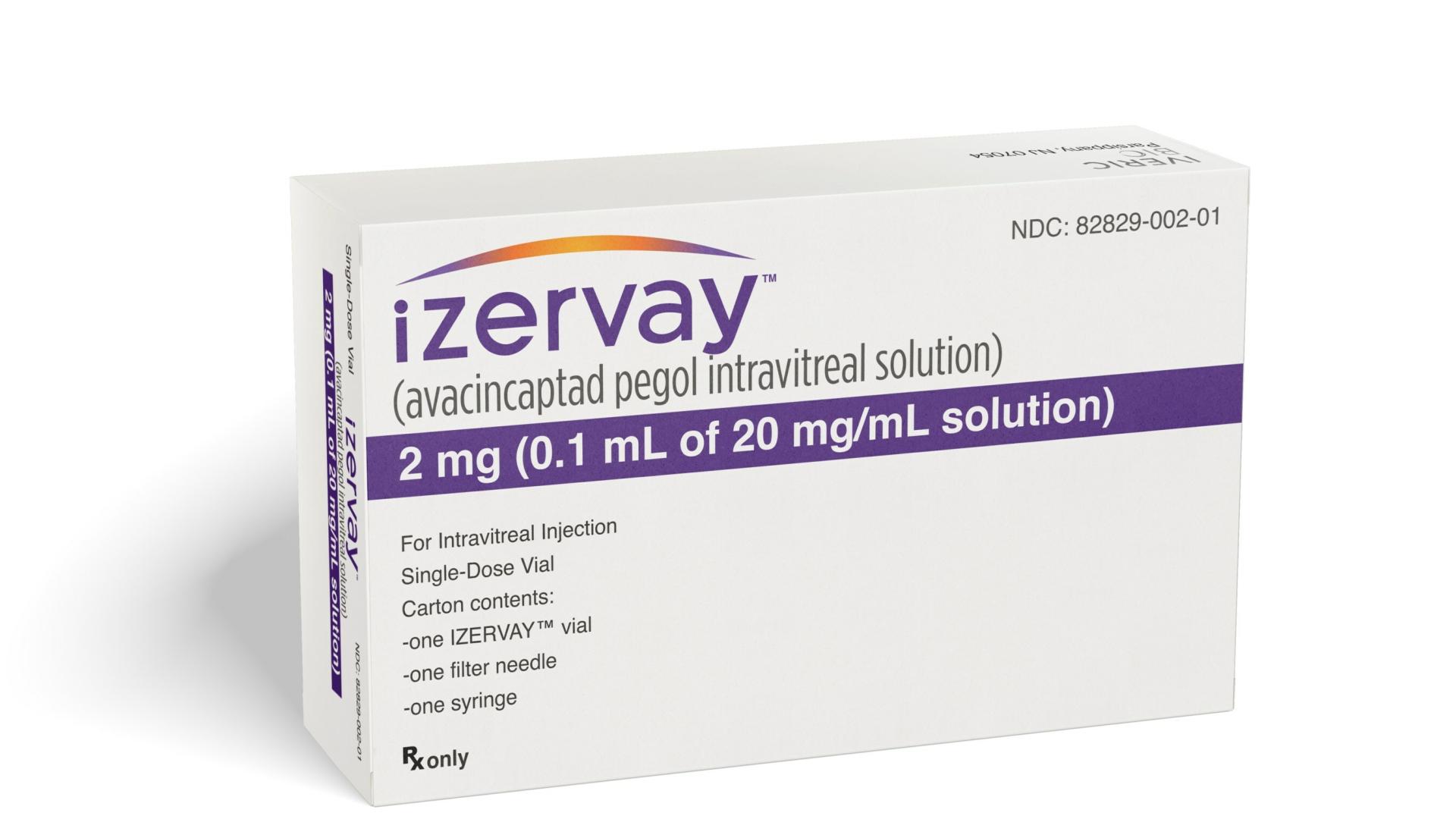Second Geographic Atrophy Treatment Receives FDA Approval
Written By: Lisa Catanese Freelance Writer



Written By: Lisa Catanese Freelance Writer

Izervay (avacincaptad pegol intravitreal solution), a new treatment to slow the progression of the advanced and severe form of age-related macular degeneration known as geographic atrophy (GA), has received full FDA approval, and is expected to be available within a month in the U.S.
Izervay joins Syfovre, which received FDA approval in February, as the only two GA treatments on the market today. The drugs work in different ways, giving individuals and providers a choice in the treatment approach that may work best for them.
Geographic atrophy causes regions of cells in the retina to waste away and die, or atrophy, resulting in a growing blind spot in the visual field. This makes it difficult to drive, read, cook, and recognize faces. GA causes about 20% of legal blindness in the U.S. and affects about one million Americans.
GA can affect one or both eyes, and someone with the disease in one eye is more likely to develop it in the other. The name geographic atrophy came about because the regions of atrophy look like a map to the doctor examining the retina.
“BrightFocus celebrates the FDA’s approval of Izervay, which offers great hope to the more than five million people worldwide who are at risk of irreversible blindness from geographic atrophy,” said BrightFocus President and CEO Stacy Pagos Haller.
Although GA cannot be cured, the goal is to slow the progression of the disease.
Izervay works by targeting excessive activation of the complement system, which is the immune system’s early response to harmful pathogens and is implicated in the development of geographic atrophy.
In clinical trials, Izervay was shown to reduce the rate of GA lesion growth by about 35% by blocking excess production of the C5 protein, thought to play a key role in the development and growth of scarring and vision loss associated with GA. By targeting this protein, Izervay decreases the activity of the complement system which causes the degeneration of retinal cells.
Izervay is given as an injection in the eye once a month for up to 12 months. The drug had been granted breakthrough therapy designation by the FDA in January under the name Zimura. It is manufactured by Astellas Pharma Inc.
Earlier studies funded by the BrightFocus Macular Degeneration Research (MDR) program contributed to scientists’ understanding of the role of complements in age-related macular degeneration pathobiology, laying the groundwork for the development of both FDA-approved treatments. Around the world, MDR-funded researchers are investigating new ways to manage, treat, and prevent macular degeneration and geographic atrophy.

The cost of Izervay is $2,100 per injection. Some portion of this cost will likely be covered by Medicare because of the age of patients when they are diagnosed with GA. Medicare currently covers 80% of the cost of Syfovre.
The most common side effects of Izervay are bleeding beneath the clear lining of the eye, blurred vision, and a temporary increase in fluid pressure in the eye. In rare cases, it can lead to an infection inside the eyeball, retinal detachment, and wet AMD. It cannot be given to someone who has an eye infection or active eye inflammation.
Syfovre, the first FDA-approved treatment for geographic atrophy, was also shown to slow the progression of the disease by 36% with monthly injections. It targets a different protein that is part of the immune system, protein C3. However, there have been recent concerns about a rare but serious side effect of Syfovre called retinal vasculitis, a potentially blinding infection that blocks blood flow to the retina.
BrightFocus offers a range of free educational and outreach programs for people with geographic atrophy and macular degeneration, including a virtual community group and monthly audio chats on macular degeneration with vision doctors and researchers.
Read the press release and learn more about geographic atrophy.
BrightFocus Foundation is a premier global nonprofit funder of research to defeat Alzheimer’s, macular degeneration, and glaucoma. Through its flagship research programs — Alzheimer’s Disease Research, Macular Degeneration Research, and National Glaucoma Research— the Foundation has awarded nearly $300 million in groundbreaking research funding over the past 51 years and shares the latest research findings, expert information, and resources to empower the millions impacted by these devastating diseases. Learn more at brightfocus.org.
Disclaimer: The information provided here is a public service of BrightFocus Foundation and is not intended to constitute medical advice. Please consult your physician for personalized medical, dietary, and/or exercise advice. Any medications or supplements should only be taken under medical supervision. BrightFocus Foundation does not endorse any medical products or therapies.
